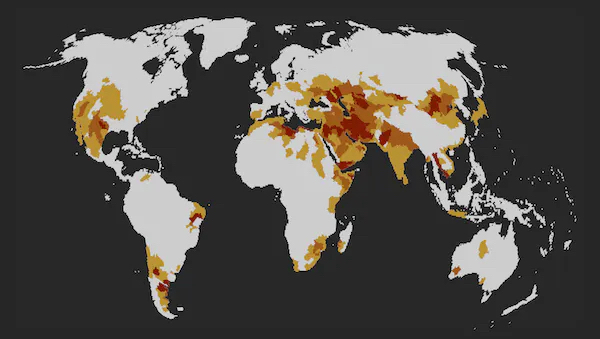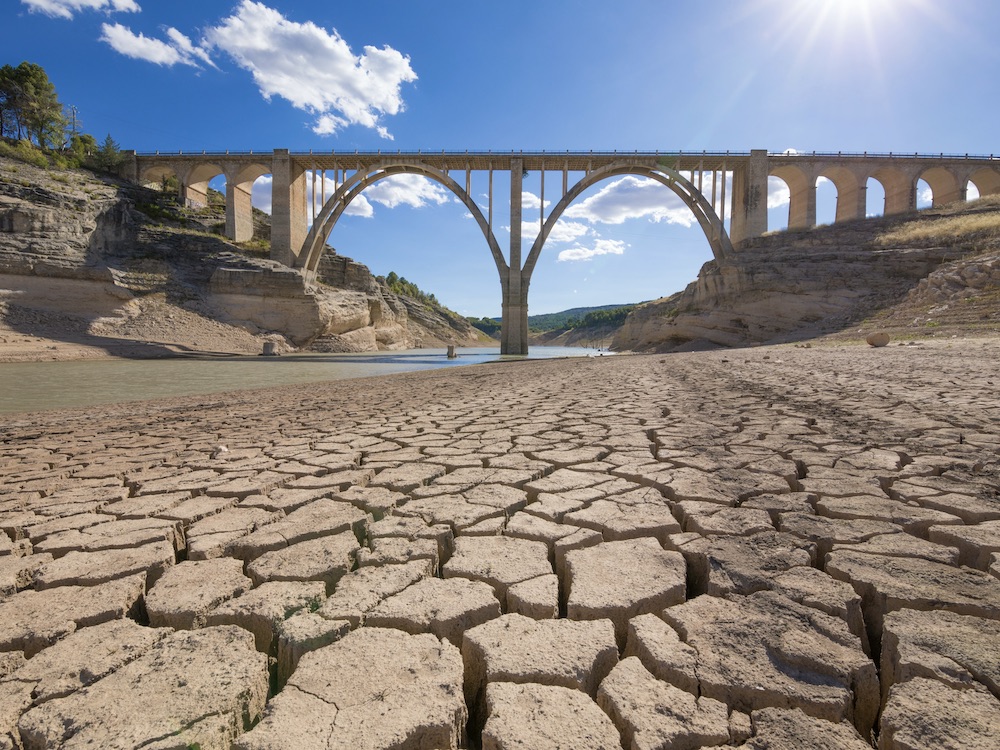When people use freshwater beyond a physically sustainable rate, it sets off a cascade of impacts on ecosystems, people and the planet. Groundwater wells run dry, fish populations become stranded before they are able to spawn and protected wetland ecosystems turn into dry landscapes.
Developments in computer models and satellites have fostered a new understanding of how freshwater is being redistributed around the planet and have made clear the central role that people play in this change. This human impact is so significant that organizations like the United States Geological Survey are redrawing their water cycle diagram to include the impacts of human actions.
Equally important as understanding how people affect freshwater availability is understanding how people and ecosystems will respond to amplified freshwater challenges including drought, water stress and groundwater depletion.
While these challenges impact localized sites, their impacts are scattered across the world. To address this global water crisis, global action is urgently needed.
In our recent study, we identified the basins of the world that are most likely to be impacted by two central and interrelated aspects of water scarcity: freshwater stress, which occurs when the consumption of water surpasses renewable supply, and freshwater storage loss, which is the depletion of freshwater in reservoirs or in groundwater bodies due to persistent overuse.
Water scarcity striking around the world
We identified 168 basins across the world that are the most likely to experience social and ecological impacts due to insufficient freshwater availability. These hotspot basins are found on every continent — a clear indication of the widespread, global nature of these challenges.

To identify these hotspot basins, we assessed patterns in freshwater stress and freshwater storage trends and compared these to patterns in societal ability to adapt to environmental hazards and freshwater-based ecological sensitivity indicators.
The hotspot basins are most vulnerable largely because they are likely to experience social and ecological impacts at the same time. People and societies depend on freshwater ecosystems for drinking water, irrigation water, water filtration, erosion control, as cultural sites and for recreation. This means that ecological impacts of freshwater stress and storage loss double as social impacts through degraded ecosystem services.
Hotspot basins are vulnerable as they are likely to face impacts such as low streamflow that harms aquatic biodiversity, reduced food security as agriculture is heavily reliant on freshwater supply, wells running dry and higher potential for social unrest.
Reducing vulnerability in intertwined societal and environmental systems requires improved policy and management integration across sectors. Integrated Water Resources Management considers and balances social, ecological and hydrological sustainability goals by co-ordinating management across water, land and other related resources. Its inclusion in the United Nations Sustainable Development Goal framework highlights its importance.
Our research found that countries including Afghanistan, Algeria, Argentina, Egypt, India, Iraq, Kazakhstan, Mexico, Somalia, Ukraine, Uzbekistan and Yemen have hotspot basins yet low implementation levels of much-needed integrated management practices.
Prioritizing hotspot basins
The location of hotspot basins across the world emphasizes the need for global and urgent action. Prioritizing regions based on their potential to experience social and ecological impacts can improve the effectiveness of global freshwater sustainability initiatives.
Our study calculated how vulnerable all the basins in the world were to the social and ecological impacts of freshwater stress and storage loss. We identified the most vulnerable basins as hotspots for global prioritization. However, while we focus on the identified hotspot basins, this does not mean that impacts cannot occur in basins with lower vulnerabilities.
For instance, only a number of Canadian basins — all located in the prairies — are identified with moderate vulnerability in our global study. Yet, dry streams on Vancouver Island, falling groundwater levels in the Lower Mainland, crop yields affected by drought throughout the prairies and potential for saltwater intrusion along the East Coast are all instances of freshwater security challenges being faced in Canada.
With massive expansion planned for irrigated agriculture in Saskatchewan and increasing water scarcity across B.C., Canada’s current (and enviable) position of being able to act proactively on water security challenges is rapidly shrinking.
Global action starts locally
While our study took a global focus, the approach of mapping vulnerability to guide priority setting can be applied at other geographical scales. For instance, this analysis could be refined and applied to Canada or specific provinces or cities using globally unavailable data that may be available for these jurisdictions.
These insights could help boost urgency to act on the emerging national water crisis, aid the modernization of the Canada Water Act or help identify communities that would benefit most from water sustainability plans in British Columbia.
While global studies, such as ours, are helpful at systematically highlighting regions for prioritization, they do not — and should not — provide explicit solutions. Rather, in such intricate social and ecological environments, actions to reduce impacts need to be attuned to place-based social norms, cultural values, hydrological conditions and local knowledge systems.
Our hotspot basins can help guide such community-driven local action to help conserve freshwater resources that are most under threat and mitigate the ripple effects of these threats on people and ecosystems.![]()
![]()
Read more: Environment
















Tyee Commenting Guidelines
Comments that violate guidelines risk being deleted, and violations may result in a temporary or permanent user ban. Maintain the spirit of good conversation to stay in the discussion.
*Please note The Tyee is not a forum for spreading misinformation about COVID-19, denying its existence or minimizing its risk to public health.
Do:
Do not: